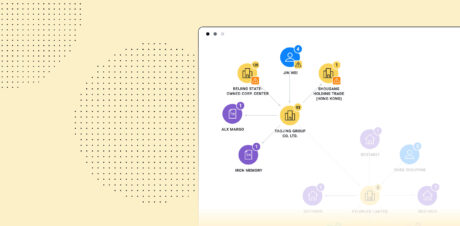Money launders are always on the lookout for new ways to disguise funds. From sanctions evasion and large-scale fraud to drug trafficking and terrorist financing, illicit actors are increasingly turning to cryptocurrencies to carry out their illegal activities. And while threat actors largely use digital currencies to remain anonymous, investigators can better unmask and target these networks with access to the right data and technology.
Recently, we hosted a Masterclass to dive into the issue of cryptocurrency money laundering. Hosted alongside experts from Chainalysis, a leading blockchain analytics firm with the most robust and accurate proprietary cryptocurrency dataset in the industry, the Masterclass offered real world examples and tips for combating crypto-related fraud and money laundering. Read on to learn why it is crucial to pair open-source blockchain transaction data with public records to enhance cryptocurrency investigations.
The world of crypto money laundering
Given the increased adoption of cryptocurrencies, it’s no surprise that more cybercriminals are using it as a vehicle for money laundering. However, the share of all cryptocurrency activity associated with illicit activity rose from just 0.21% in 2021 to 0.24% in 2022 according to The Chainalysis Crypto Crime Report.
Money laundering is crucial to all financially motivated crime because it’s what enables criminals to access the funds they generate from their activities. The goal of money laundering in crypto is to move funds to addresses where the original criminal source of the funds can’t be detected, and eventually to a service that allows cryptocurrencies to be exchanged for cash. This activity typically involves two types of blockchain entities and services:
- Intermediary services and wallets: These can include personal wallets, mixers, darknet markets, and other services, both legitimate and illicit. Crypto criminals typically use these services to hold funds temporarily, obfuscate their movements of funds, or swap between assets.
- Fiat off-ramps: This refers to services that allow for crypto to be exchanged for fiat, or government-issued currencies not backed by a physical commodity, e.g. the U.S. dollar.
These two services are the most important part of the money laundering process because the funds can no longer be traced via blockchain analysis once they reach the service. When the funds are converted into cash, it can then only be followed through traditional financial investigation methods.
In 2022, illicit addresses sent nearly $23.8 billion worth of crypto. Unsurprisingly, mainstream centralized exchanges were the biggest recipient of illicit crypto, taking in just under half of all funds sent from illicit addresses. This illustrates a crucial difference between financial investigations in cryptocurrency versus fiat. In crypto, criminal holdings can’t be stashed away in opaque networks of banks and shell corporations, almost everything is out in the open.
However, illicit actors leveraging cryptocurrency often use shell companies and other off-chain methods of obfuscation in conjunction with their on-chain activities. This suggests that having access to open source blockchain transaction data is not enough; investigators need to pair that information with other forms of public data to obtain a more holistic view of illicit networks leveraging crypto.
Indicators of money laundering in digital currencies
Despite some of these challenges, it’s possible to spot potential money laundering with cryptocurrencies. The Department of Treasury’s Financial Crimes Enforcement Network (FinCEN) has created a list of red flags to watch out for when looking for illicit activity with digital currencies. Some are listed below, but this is in no way an exhaustive list especially considering the world of digital currency is ever evolving.
- Activity dealing with Darknet marketplaces
- Unregistered or illicitly operating peer to peer exchangers
- Unregistered foreign-located money service businesses (MSB)
- Unregistered or illicitly operating convertible virtual currency kiosks (CVCs)
- Illicit activity leveraging CVC kiosks
Learning to layer public records with blockchain analytics will be critical to running efficient investigations into illicit activities. To watch a cryptocurrency money laundering investigation in action, watch our Masterclass hosted with Chainalysis.



